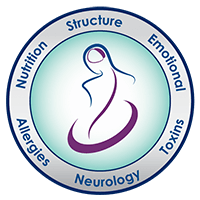Brain-based therapy or BBT is a process of diagnosing how the brain is working and which areas of the body are being affected by it. There are many conditions that can be helped such as sciatica, vertigo and fatigue, simply by tracing the causes back to basic brain functions.
Can you start with a quick refresher on what the different parts of the brain are, and the functions they control?
Dr. Greg Olsen: Yes, that is a great place to start. So, when we look at the different parts of the brain, a good way to start is looking at what a lot of people know as, what we’ve already talked about, left brain and right brain. Left brain generally we’re talking about language, math, processing information. The right brain is really more of our creative side. Then the different areas, we look at the temporal part of the brain, basics of memory, the occipital lobe, really where vision occurs. The parietal lobe is where our sensory processing happens, and then the frontal area is associated with our ego and our ability to focus. The cerebellum is one of my favorite areas to look at with the brain. That does so much. It has to do with sensory and motor processing, helps control our balance and our posture or coordination, controls the tone of the spine. Then there is an area called the mesencephalon; it is an area in the upper brain stem, and it is really controlled by the other parts of the brain, the frontal and parietal lobes, and their job is really, with their input, is to keep it from over firing. Those are a breakdown of some of the basics as far as key parts of the brain.
Can you please explain the concept of the brain loop and how normal brain function works?
Dr. Greg Olsen: Absolutely, that is a great question. So, when we talk about the brain loop, the brain loop is a basic way of looking at, for the brain, input equals output. Again, a key area of the brain is the cerebellum. It is receiving information from all over the body and sensory and postural tone, and it is sending messages and signals to the left and right part of the brain, and that then redistributes it down to an area in the brain stem called the mesencephalon, the pons and the medulla. So, it is important for that loop to be firing properly to keep balance in the body and the brain.
What are some symptoms that the brain is not functioning correctly?
Dr. Greg Olsen: I like that question; that’s really good. It’s interesting. When we look at a lot of parts in the body, the brain does not have any pain firers, so if it is not working properly you can’t say, “Ouch, my brain hurts.” So really what you’re going to notice is whatever area or areas that are affected, you will notice a decrease in function from those areas that are affected. So, for example, if you’ve had a hit on the side of your head in the temporal area you may experience problems with memory and speech, being able to find words, or even talking or listening to music; it just doesn’t make sense. Or if you are hit in the back of the head you could have a problem with occipital area or vision. The cerebellum, commonly involved, and that’s where you can have problems with balance. When that area comes into play, you really look at problems where you can have things like a problem with the brain loop feedback, and you can get things like insomnia, fatigue, chronic pain, diarrhea and/or constipation. You can also get vertigo, or dizziness, things like sciatica and chronic pain. And because of its association with tone in the spine you can get disc diseases or bulges or disc herniations.
What is BBT, or brain-based therapy, and how can it help restore normal brain function?
Dr. Greg Olsen: Brain-based therapy is really a process of diagnosing when and how the brain is not firing or working correctly and providing treatment to increase function to that area. And also looking at the metabolic influence of how the brain works, things like circulation, oxygen, any types of anemias, cellular toxicity, cellular inflammation. So, the importance of that feedback is if it is not working properly, you can have a wide host of problems that develop. Say for example you have a problem in the neck and you’ve got a disc bulge or herniation, if you direct that therapy entirely to the local area without addressing the higher function of where the brain function might be happening, you really can see incomplete results or not effective treatment if you’re just focusing on that local area and not how the brain is working and contributing to that problem.
What conditions are helped the most by this therapy, and how does someone get started?
Dr. Greg Olsen: Well, the conditions that are helped the most are things that we’ve mentioned before, including insomnia, fatigue, chronic pain, vertigo and dizziness, sciatica, peripheral neuropathy, or loss of feeling in the legs or hands, disc bulges, and disc herniations. There are times when you can have a global impact, things like concussions or brain inflammation where you can have problems with sensory processing, memory, vision, brain fog, some of the names out there like attention deficit disorders. So those are some of the common things that can be seen associated with this.
Getting started simply is making a phone call and getting set up for a consultation, that’s the best way to get started and then you can get evaluated and find out exactly how your brain is working and where to go from there.
Learn More
To speak with Dr. Greg Olsen, visit www.askdrolsen.com or call (949) 859-5192 to schedule an appointment.
Click here to receive more information & to schedule your consultation.

